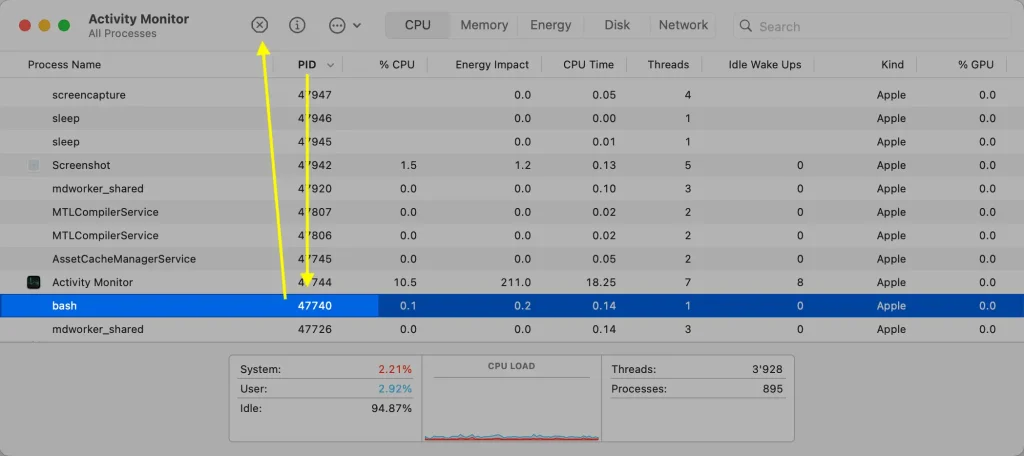When trying to eject a disk, e.g. an external volume, via Finder then sometimes macOS is not able to name the exact application still accessing files on that disk – and leaves you wondering with a rather generic message: «One or more apps are using it». But we also learned that force-ejecting disks is a big No-No.
So how can you find out which exact application is preventing a disk from being ejected from your Mac?
Back in the day there was a neat tool «What’s keeping me?» that gave you a simple UI to quickly list all programs accessing and blocking open files on a volume, and closing them. In the meantime this app is no longer supporting modern macOS versions – and the UI-driven help even provided by Apple Support won’t do the job either, as sometimes a background-process has files open on the affected volume.
Here’s a step-by-step guide to find & close apps or processes, that still access files on a disk, in order to unblock the disk to be ejectable again.
🕵️♂️ Advanced approach to find apps blocking a disk from being ejected
This is a solid and compatible way for many macOS-versions. Unfortunately it means to resort to the technical Unix Terminal.app on your Mac. Optionally however you can use it in combination with Activity Monitor.app.
Open the Terminal.app
Find it in macOS Finder under Applications » Utilities (or shortcut ⌘CMD+⇧Shift+U).
Type the following command* targeting the affected disk’s name
lsof /Volumes/MyDisk* optionally you can prefix the command with sudo lsof in order to also list system processes
This will list apps / processes currently accessing something on the disk
Similar to the following example.
Note: the most important information you need later is the «COMMAND»-name (= app / process name) and the «PID»-number (= unique Process Identifier).
COMMAND PID USER FD TYPE DEVICE SIZE/OFF NODE NAME
zsh 45355 me cwd DIR 1,24 512 2 /Volumes/MyDisk
bash 47740 me 255r REG 1,24 73 34903 /Volumes/MyDisk/run.sh
lsof 47389 me cwd DIR 1,24 512 2 /Volumes/MyDisk
lsof 47390 me cwd DIR 1,24 512 2 /Volumes/MyDiskQuit or kill the blocking apps / processes to allow ejecting the disk
While you are in the Terminal.app already, you can either use the Unix command to «kill» a process (app) by using its «PID»-number as follows:
kill 477740…or you can use the Activity Monitor.app from the Utilities folder in Finder:
- on the «
CPU»-tab search for the process based on «COMMAND»-name or the «PID»–number - select the app / process and click the «🛑
Stop»-icon: then choose «Quit» or «Force Quit».

Now you should be able to eject the disk properly!
Kudos
- «How Do I Find Out What Program(s) Is/are Using an External Drive?» at MacMost.com
- «Find app that’s using the disk» on the Apple Community Discussions

